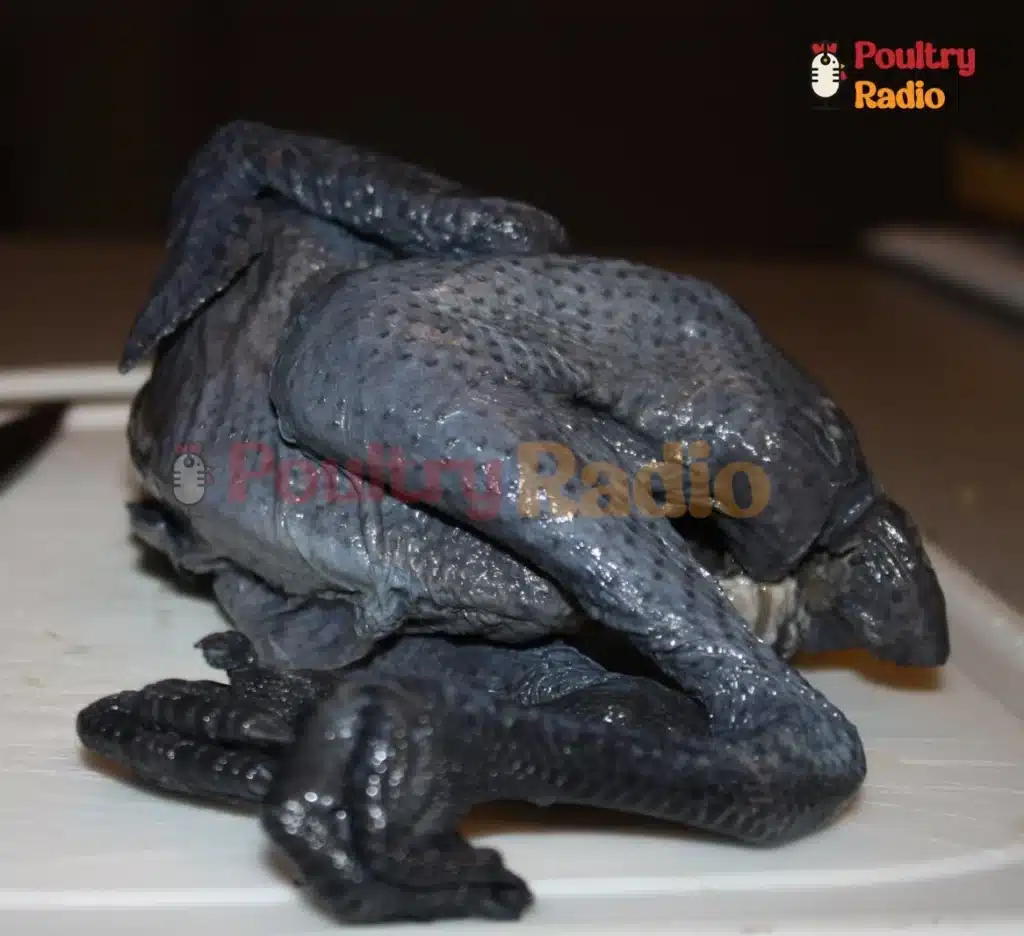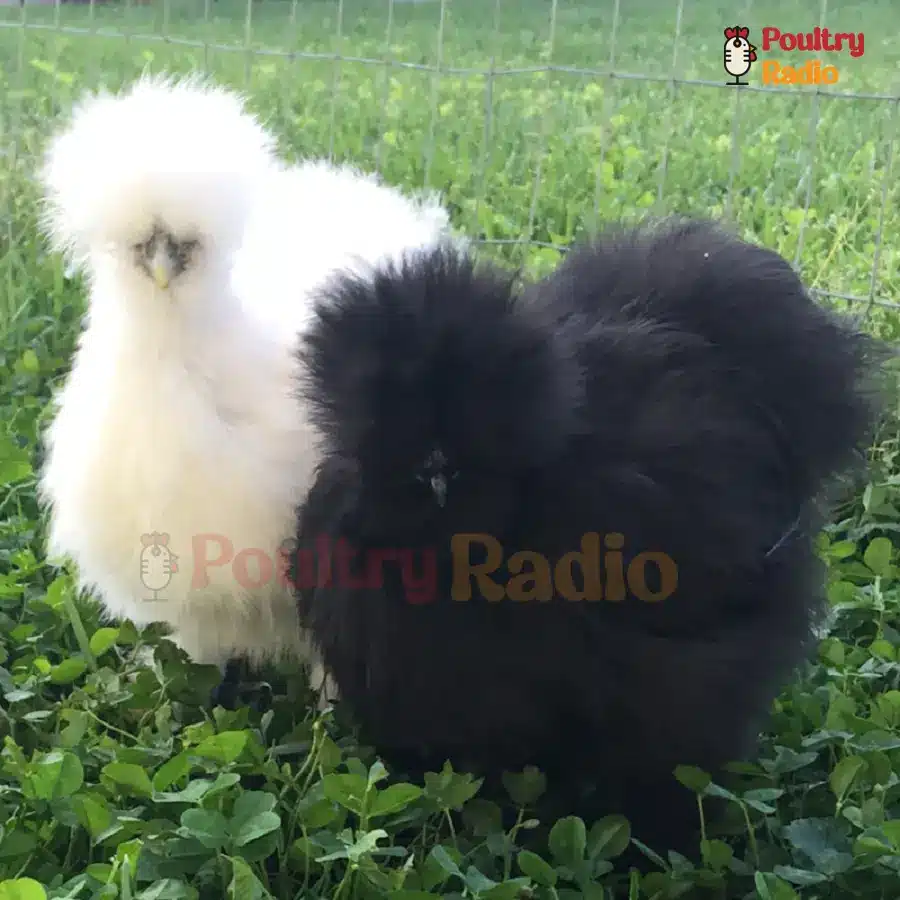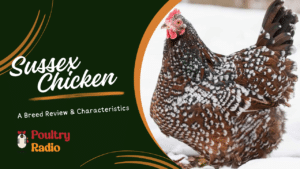Black Silkie Chicken Breed: All in One Guide
Aside from its stunning black feathers, friendly nature, and superior parental instincts, the Black Silkie Chicken breed has a lot more to offer. Because of its many unique characteristics, this species of chicken is widely valued by lovers of birds.

Today, however, we’re learning some amazing details about the “lap dog” of the chicken division.
This is for you if you’re a fan of the Black Silkie chicken breed or hope to get one of these elegant and gorgeous birds.
History and Origins of the Black Silkie Chicken Breed
The real origin of the Black Silkie Chicken breed is still a mystery. However, China is the most likely place of origin that has been documented. Its Mandarin name is (瀗骨雞) Wu Gu Ji, which means “dark-boned chicken” or “black-boned chicken.”
Rumors, however, indicate that it most likely started in other Asian nations, such as Java (Indonesia) and India. However, since the Spanish explorer Marco Polo saw this amazing breed while traveling through Asia in the 13th century, it is almost expected that it only existed in that region.
The Silkies, in his words, are like a “furry chicken.”
Then, in 1598, the first thorough description of this breed was published by Italian writer and biologist Ulisse Aldrovandi of the University of Bologna. He called Silkies “chickens bearing wool” and a breed “dressed in hair resembling that of a black cat.”
Eventually, trade by sea brought this breed to North America.
And many Americans were easily charmed by its stunning appearance.
In 1874, the American Poultry Association officially acknowledged it as a breed.
This breed’s exceptional temperament and special look have made it one of the most beloved and well-liked breeds today.
Black Silkie Chicken Breed Standard & Appearance
Here’s a thorough description of the typical Black Silkie chicken to help you easily identify this Silkie variation.
Color of Black Silkie Chicken
The typical Black Silkie Chicken has feathers that are consistently black in color and have a shine.
Their beak is slate blue, their ear lobes are turquoise in color, and their eyes are black.
However, the comb, face, and wattles of Black Silkie Chickens are typically mulberry in color.
In the world of chickens, they were referred to as “lapdogs” and “fluff balls” due to their gorgeous plumage, attractive appearance, and tendency to sit on their owner’s lap.
They are a unique and elegant breed because of their feathered feet, crests, and five toes.
In addition, Black Silkies have black meat and skin, just like other Silkies.
Fibromelanosis, a rare genetic mutation causing hyperpigmentation, is the cause of its black color.
Thus, the deep color is due to the melanin pigment in their skin.
Other breeds of chicken have this pigment as well, such as the Javanese Ayam Cemani.
Feathers of Black Silkie chicken
This particular Silkie breed has unusual fluffy black feathers that feel and look like fur because their feathers lack barbicels.
The tiny hooked filaments known as barbicels connect a bird’s feather barbules.
Regardless of its attractive appearance, it has a drawback. Being unable to fly made Black Silkies more at risk from predators.

Size and Weight of Black Silkie Chicken
No matter how big they are, silkie chickens are regarded as bantams in the US and Canada.
However, the UK is home to large poultry.
Yet, a Silkie must weigh about 4 pounds (64 ounces) for males and 3 pounds (48 ounces) for females to qualify as one.
Therefore, the ideal weight for bantams is 500g (18 oz) for females and 600g (21 oz) for males.
Broodiness and Egg laying capability of Black Silkie Chicken
Black Silkie hens possess exceptional maternal behaviors and are broody.
Silkie hens frequently assist one another in raising 20 or more chicks by co-mothering. That is the reason they have been raised.
These dependable and responsible mothers are even capable of caring for and assisting with the hatching of the eggs of other birds, such as ducks, pheasants, and turkeys.
They have several instances of brooding in a single season.
However, they are not prominent egg layers, which is a drawback to their broodiness. It means that, compared to the typical chicken, they lay fewer and smaller eggs.
Black Silkie chicken can lay on an average of 120 eggs per year. Seasonal variations may occur, but it is less than in other breeds.
Black Silkie chicken eggs come in a range of colors, including white, cream, and tints. Their feathers and black skin therefore do not affect their eggs.
Late December or early January is when silkies begin to lay eggs.
Compared to other hens, they lay earlier and match with the onset of longer days.
Black Silkie Chicken Meat
Silkies are very popular as table fare in Asian countries because of their black skin, black bones, and darker meat than that of regular chickens.

Though they are regarded as gourmet birds in some countries, most of the world doesn’t consider them table fare or even dual-production birds because of their small stature, which makes them poor meat producers.
Raising Silkies for meat would require a high cost in feed and time to produce a tougher, and smaller bird.
Silkies have their roots in a wealth of Chinese customs, mythology, and culture. It is thought that their dark meat, skin, and bones have medicinal benefits.
The bones were traditionally used to make stock after the meat and skin were consumed.
After that, the bones were powdered and used to make several medications.
There may even be some truth to this, according to recent research, as dark meat, skin, and bones are high in antibodies.
It’s also widely known that the stock stimulates fertility.
When goji berries, ginger, and red dates are added to Silkie chicken soup, it is believed that this will be beneficial for developing fetuses and increase women’s fertility. It also helps women who have recently given birth regain their vitality.
It makes a pleasant connection to the Silkie’s superb maternal instincts.
Black Silkie Chicken Meat and Regular Chicken Comparison
Of course, the size difference between a Silkie and a regular chicken is the most noticeable one.
As silkies are real bantams, they are smaller than ordinary chickens and will produce less meat at the time of slaughter.
Black silkie chicken meat is favored for soups and stocks because of their small size and bony structure, as well as the odd color of their skin, meat, and bones.
It’s claimed that the Black Silkie chicken meat tastes even better than ordinary chicken.
Because of this, it’s usually added to soups and sauces rather than being eaten as a breast or fried in large chunks.
Furthermore, silkie chicken meat is high in protein, amino acids, and vitamin B. It also pairs well with stronger seasonings and is far less oily than regular chicken.
Temperament of Black Silkie Chicken
This unusual breed can live in confinement and is typically calm, broody, and quiet. Black Silkies are friendly birds that enjoy curling up on their owners’ laps.
In the world of chickens, this is why they are called lapdogs, and most children love them. But in mixed flocks, their submissive nature leaves them susceptible to bullying.
It would be best to place them with Polish hens that have similar characteristics as dominant birds may pick on them.

Black Silkie Chicken’s Common Health Concerns
Although silkies are generally healthy, Marek’s disease can also affect this variety. Although you have the option, most breeders choose to vaccinate their stock to promote natural immunity.
However, because of their fluffy feathering, they may also be susceptible to mites and lice.
If so, to improve their vision, you will need to take care of them and trim the feathers surrounding their eyes.
Periodically, they should trim the fluff on their back for breeding and hygienic reasons.
They require a great deal of attention, but with the right care, they can live up to 7 or 9 years.
Is the Breed of Black Silkie Chicken the Ideal Choice for You?
Black Silkies have every benefit and drawback of other varieties.
They are perfect for apartment living because they are generally peaceful and well-mannered.
They still require extra care, though, just like other Silkies.
Furthermore, Black Silkies aren’t the best breed of chickens if you’re looking for a high-producing egg chicken.
Because of their feathering, they are not suitable for environments that are frequently wet or muddy.
These fluffy creatures can withstand mild cold, but they shouldn’t get wet. To avoid hypothermia, you must wipe them until they are dry.
However, they are the breed for you if you want a broody hen that can help in hatching the eggs of your duck, pheasant, and turkey.
They are excellent foragers, so even though they can survive in cages, you can still let them move freely. Since they are unable to fly, you must make sure that the area where they will forage is safe from predators.
Additionally, they’re perfect for people looking for ornamental and show chickens. For a new Silkie owner, a pair of Black Chickens will be a good place to start.
Summary
These adorable fluffy balls can make your day, but they are a fairly costly breed of chicken that needs much care.
They would adore cuddling, sitting on your lap, and going everywhere with you.
Although they might not produce a large number of eggs, Black Silkies are a great addition to any flock due to their brooding disposition and maternal instincts.
Hence, it’s something to think about if you can give cute chickens like the Black Silkie breed a healthy and secure environment.
Commonly Asked Questions
Can Black Silkie chickens fly?
Unfortunately, because of their split wings and fluffy feathers, Black Silkies are unable to fly. Axial feathers, which mark the separation of primary and secondary feathers, are absent in split wings. Their wings droop as a result, making it impossible for Silkies to fly.
How long does a Black Silkie chicken live?
They can live for 7 or 9 years, but getting there will require a lot of care.
Do Black Silkie chickens lay black eggs?
Like other Silkie varieties, black Silkies lay tiny, white eggs. Their dominant meat and feather color is a deep blue-black, which has no impact on the color of their eggs.
What is the market price of a Black Silkie chicken?
Because Silkie chickens are a popular choice for raising chicken pets, they are typically expensive. Excellent quality chicks can range in price from $10 to $15, while hens can cost anywhere from $25 to $50. The quality can affect the prices minimally.
Can we eat black silkie chicken?
Silkie chickens have feathers that are snowy white, covering their black skin, black meat, and black bones. Silkie chickens have a “high iron” content making them suitable for roasting like chicken or boiling into a tonic soup that Asians believe can strengthen people who are sick, elderly, and pregnant.








